(7 min read) The magnificent Dome topping Florence Cathedral — number 37 in my countdown of the Fifty Greatest Works of Gothic — launched Renaissance architecture into European consciousness, but it sits atop a fine Italian Gothic base. In this post we look at both.
(For more about this series, see the introduction and the countdown.)
Common Name: Florence Cathedral / Il Duomo di Firenze
Official Name: Cattedrale di Santa Maria del Fiore (Cathedral of Saint Mary of the Flower)
Location: Florence, Italy
Primary Dates of Gothic Construction: 1296-1414 (Renaissance dome, 1420-1436)
Why It’s Great
Florence Cathedral represents a pivotal moment when Gothic construction met Renaissance innovation, culminating in Brunelleschi's revolutionary dome that solved what had seemed an impossible engineering challenge. The cathedral's polychrome marble cladding, soaring interior proportions, and masterful integration of the dome with the Gothic structure below create one of Europe's most visually striking and historically significant religious buildings.
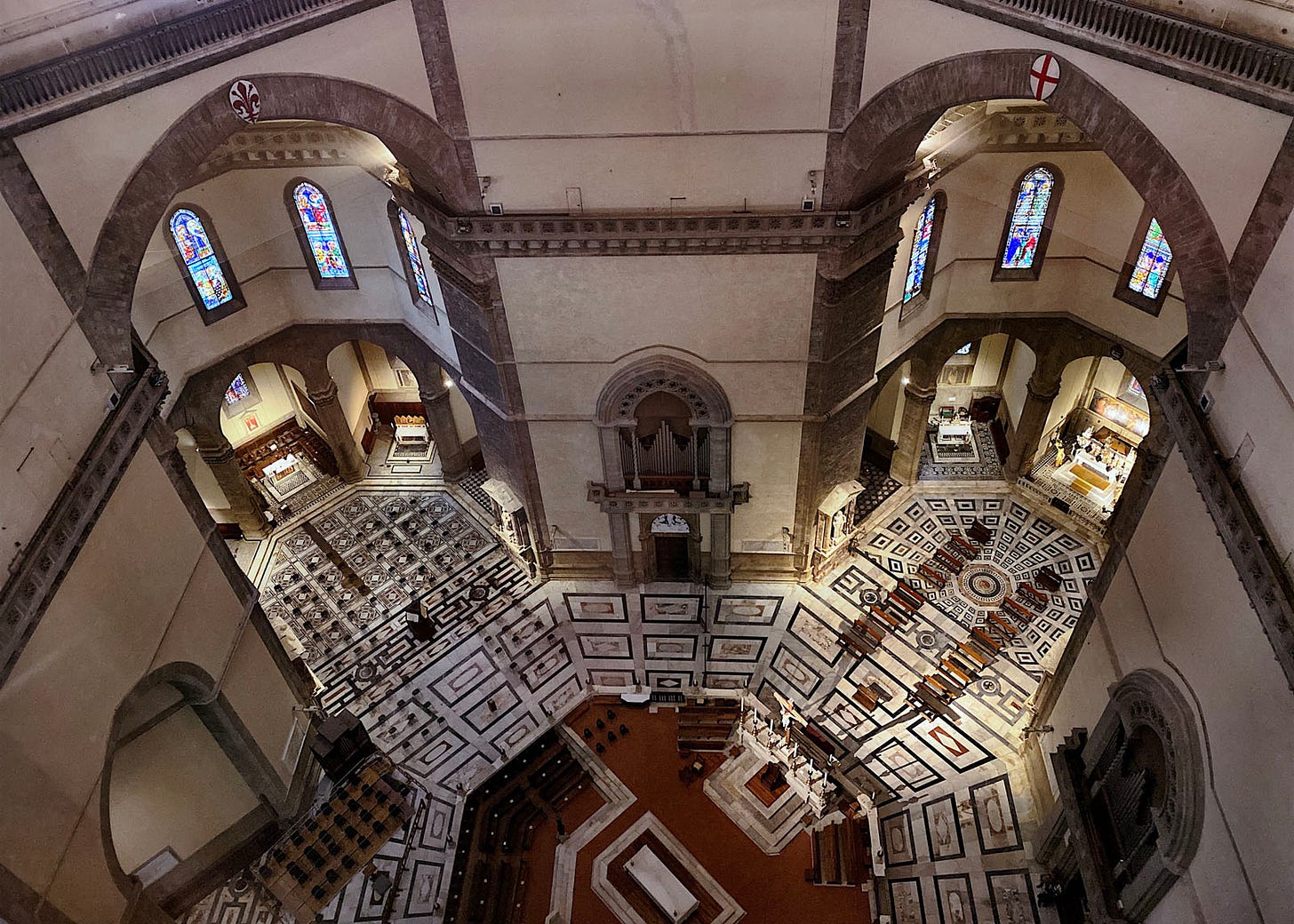
Why It Matters: History and Context
If this were a list of the greatest cathedrals in Europe, and not the greatest Gothic cathedrals, Florence's Duomo would rank in the top five — Brunelleschi's dome is an engineering marvel and architectural masterpiece.
But with his dome, Brunelleschi (whose nearby Hospital of the Innocents is widely considered the first work of Renaissance architecture—see my Note in the “In Detail” section below) also managed to transform what was a straightforward piece of Italian Gothic into an icon for the Renaissance. Thus the church sits in the mid-30s of my list of the greatest Gothic architecture — it is more important for its Renaissance aspects than its Gothic.
The story of Florence Cathedral begins in 1296, when construction started to replace the city's smaller cathedral of Santa Reparata, at the same site. Arnolfo di Cambio designed an ambitious Gothic structure, but after his death in 1302, work slowed. In 1331, however, the powerful wool merchants' guild (Arte della Lana) took control of the project, appointing Giotto di Bondone as master builder in 1334, with Andrea Pisano as assistant. Their main contribution to the cathedral complex is the bell tower (campanile), which stands separate from the main cathedral (figures 8, 12-14).
The outbreak of the Black Death halted plans, but only briefly. Beginning in 1349, work progressed under a series of architects, expanding the cathedral's plans and creating a massive nave with wide bays and a grand octagonal crossing (figures 2, 4, 17, 22-23). Perhaps too grand.
By 1418, the main Gothic structure was largely complete — except for the crossing’s dome. Its planned 42-meter diameter opening presented an unprecedented engineering challenge, as traditional Gothic buttressing wouldn't work given Florence's architectural preferences.
In 1420, Filippo Brunelleschi won the competition to construct the dome after demonstrating innovative techniques that would allow it to be built without conventional scaffolding. His revolutionary double-shell design featured an inner and outer dome connected by a hidden skeletal structure, with horizontal stone and iron chains acting as tension rings to counter outward thrust.
Work on Brunelleschi's dome lasted from 1420 to 1436, and the cathedral was consecrated by Pope Eugene IV upon its completion. The west facade, however, remained unfinished until the 19th century — it was completed in the neo-Gothic style by Emilio De Fabris between 1871 and 1887 (figures 3 & 9)
Today, the Florence Cathedral complex — including the cathedral itself, Giotto's Campanile, and the Baptistery of San Giovanni, built from 1059 and 1128 in the Romanesque style — stands as a testament to a range of architectural styles, including traditional Gothic and innovative Renaissance.
Photo Tour
Two of the greatest experiences you can have at Florence’s cathedral are climbing to the top of the dome and to the top of the bell tower. So our photo tour will begin with an overview of the exterior from the ground, and then show views from the tower and dome climbs (which includes some spectacular interior views from the base of the dome as well). After that, we will turn to the interior proper, viewing it from ground level.
Figures 8-11 show the cathedral's exterior from street level at different times of day. These, along with the other exterior shots throughout this essay — taken over the course of two weeks from dawn to dusk — demonstrate how dramatically the polychrome marble facade transforms in changing light. The white, red, and green marbles take on completely different characteristics depending on the light.
Figures 12-15 show the bell tower and views from it.
Climbing to the top of the dome (figure 1) includes winding your way through Brunelleschi's ingenious double-shell design (figure 16). The dome is actually two — an inner and outer dome with a space between them, connected by a hidden skeletal framework that distribute the enormous weight while allowing the dome to rise without traditional scaffolding.
Before and after that vertiginous experience, you will walk around the rim of most of the dome’s base, and get great views of the cathedral plan below (figures 2 & 17) as well as get very close to Vasari’s massive Last Judgement cycle which fill the interior of the dome (figure 18; also see the “In Detail” section below for a dozen detailed photos).
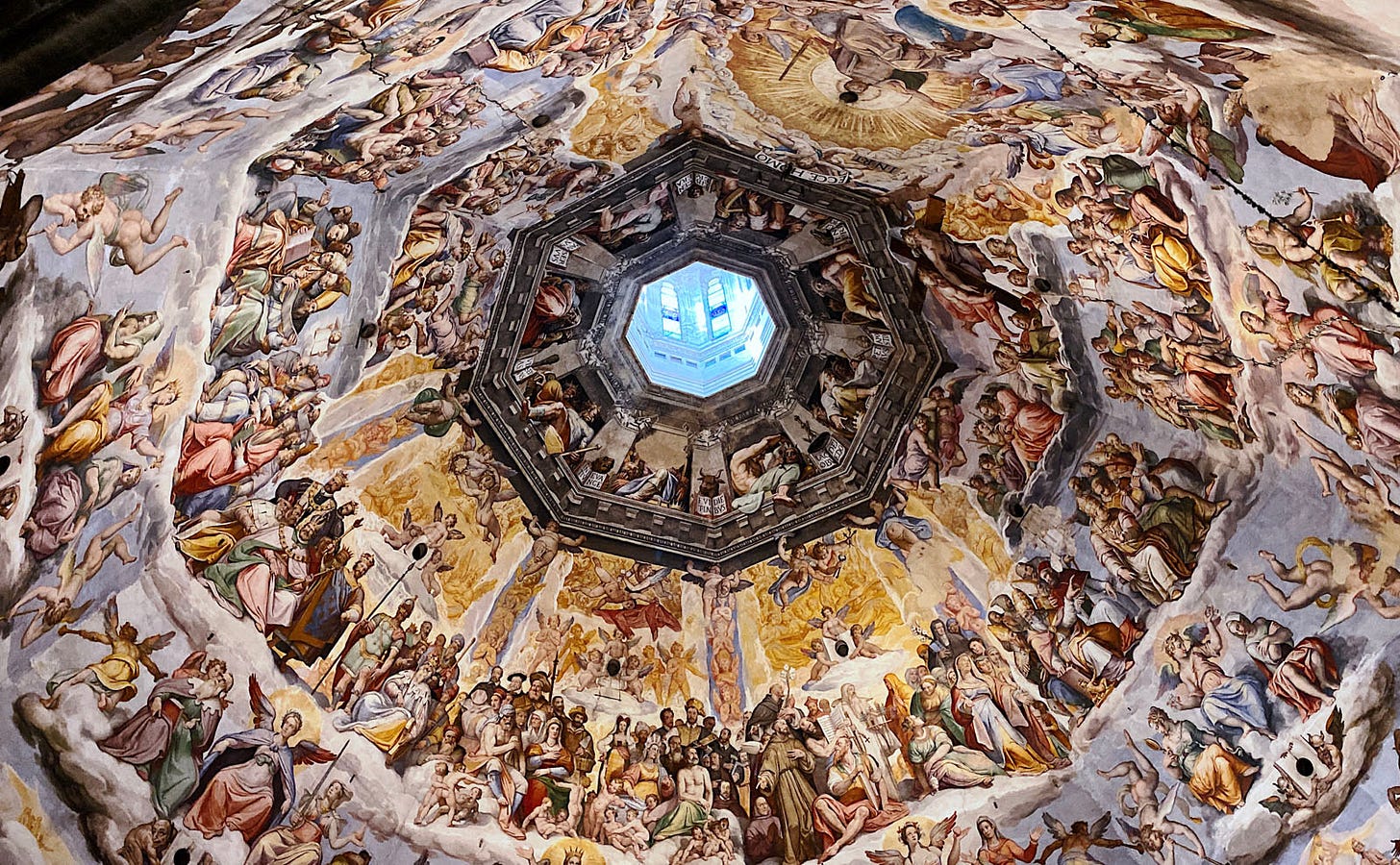
The expansive interior of the church is spare, with clean lines and intricate flooring patterns. Figures 19-20 show the nave.
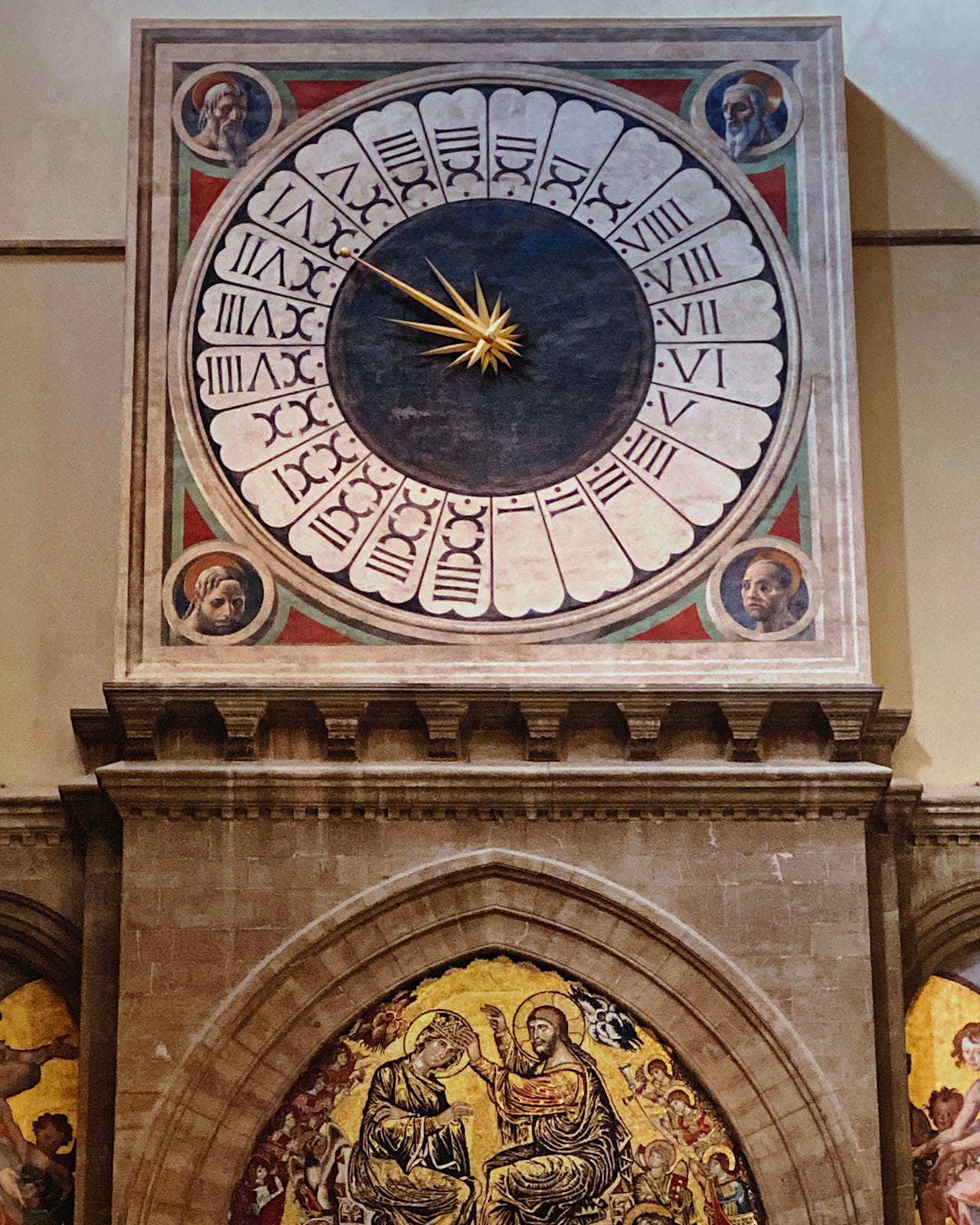
Figures 22 and 23 are of the crossing.
The side aisles are shown in figures 24-26.
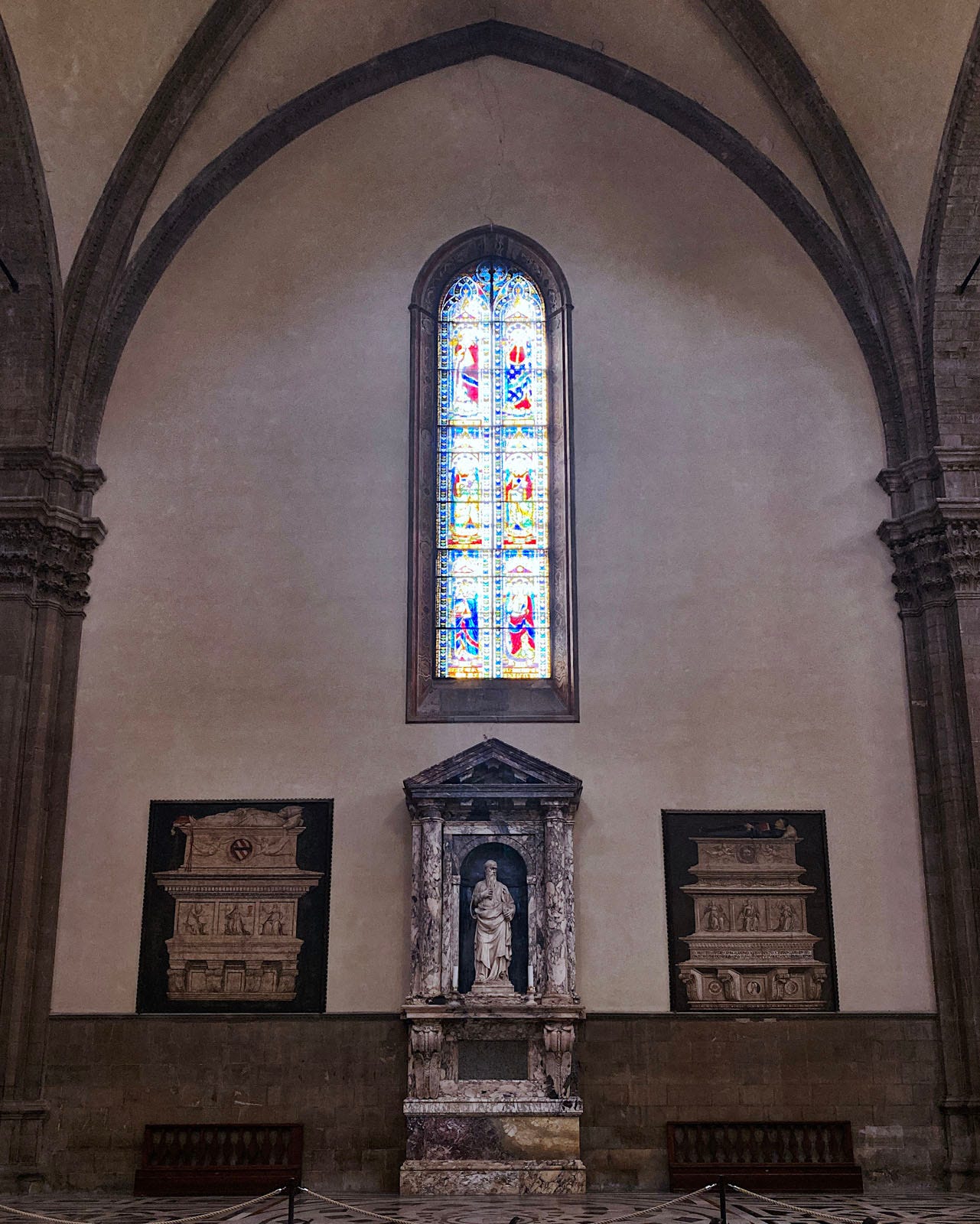
If you are into architectural history, or just want to see some of the original medieval statuary of the original facade as well as the nearby baptistry, a visit to the nearby Opera Duomo Museum (figures 5 & 28-29) is essential.
** Please hit the ❤️ “like” button❤️ if you enjoyed this post; it helps others find it! **
In Detail
Here’s a post on Brunelleschi’s work at the Hospital of the Innocents, which preceded his dome by some 20 years:
Here are two posts on the interior of the dome ceiling, painted by Vasari from 1572 until his death in 1574, and finished by Federico Zuccari in 1579:
Visiting Advice & Conclusion
My Visit Dates: 18-20, 24 October 2021
Florence is on everyone’s bucket list, so the city (and the church) gets crowded. Buy timed tickets in advance for dome and tower climbs — and if your schedule allows, I highly recommend timing one or both so that you are at the top shortly before sunset. To enter the church, there is no choice but waiting in line, and being first in the church requires showing up at least 45 minutes before opening (at least in my experience, in October 2021).
Pro Tip & Suggested Reading: Brunelleschi’s Dome by Ross King makes for an excellent read before visiting (or at any time — it’s a great story told in an engaging stlye).
Florence Cathedral stands as a testament to artistic vision and human ingenuity, bridging the medieval and modern worlds through its unique fusion of Gothic and Renaissance elements. While its dome may have launched Renaissance architecture into European consciousness, the Gothic foundations beneath remind us that architectural revolutions don't emerge from nowhere—they build upon and transform the traditions that came before them.
** Please like and share this post if you enjoyed it! **





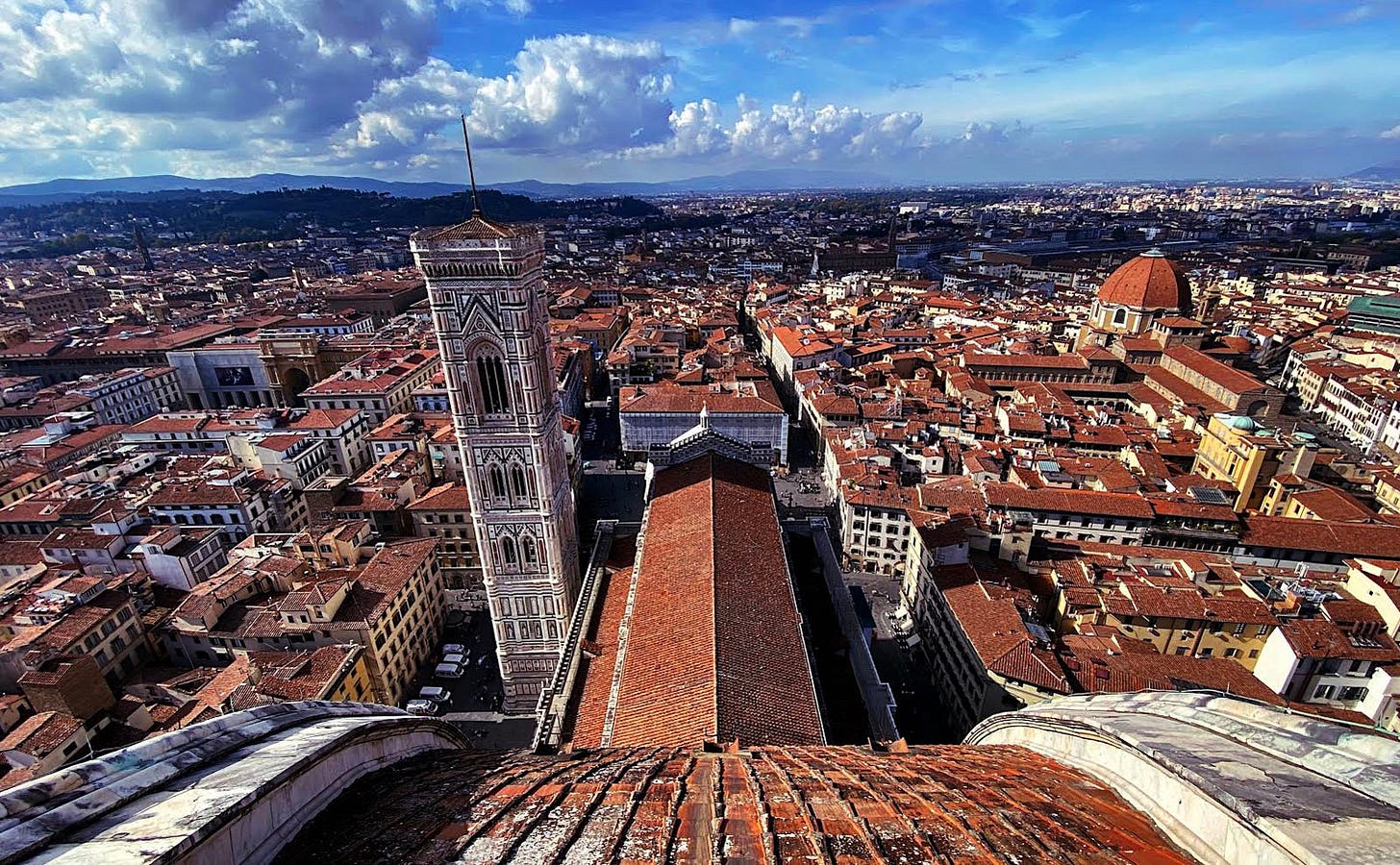
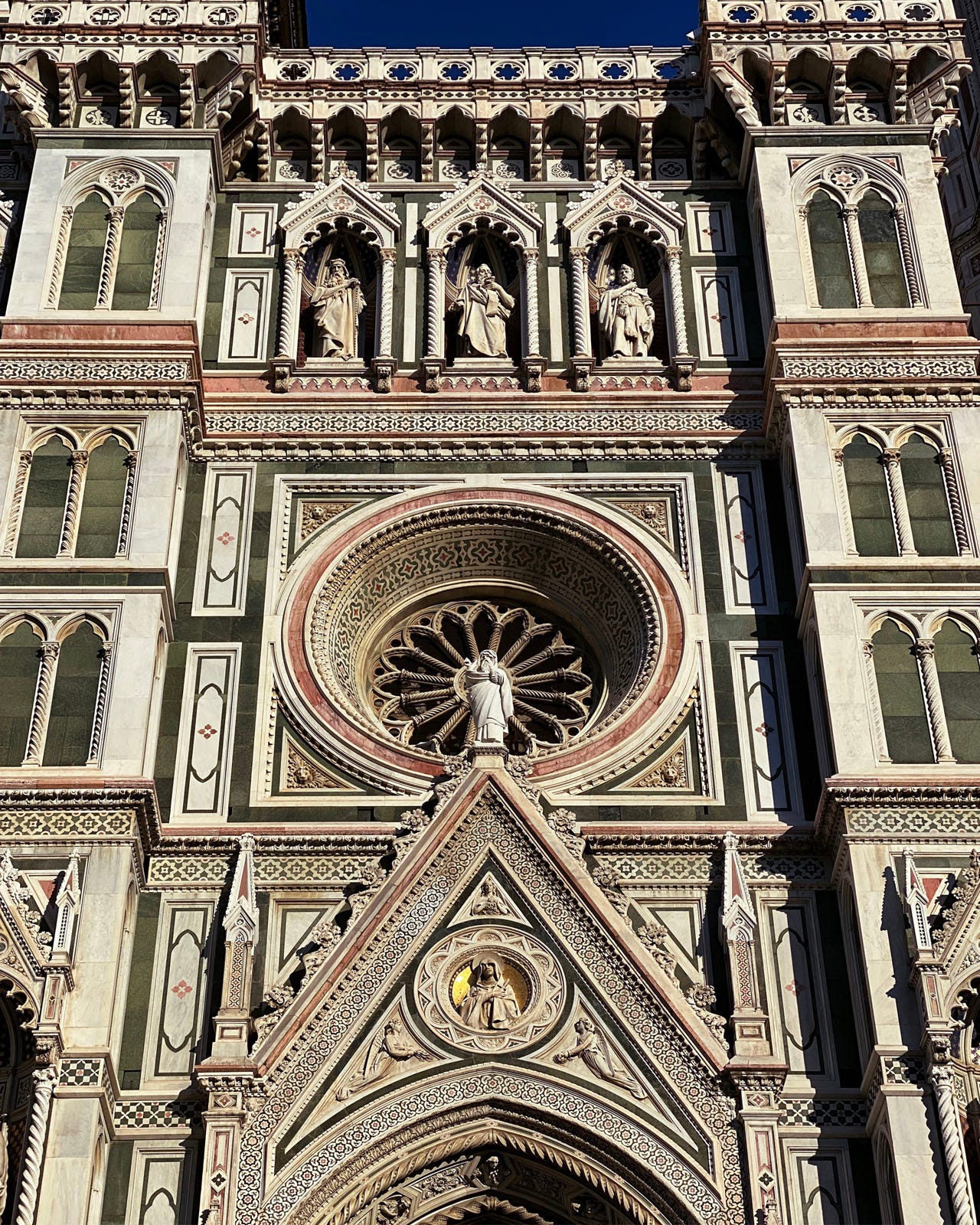
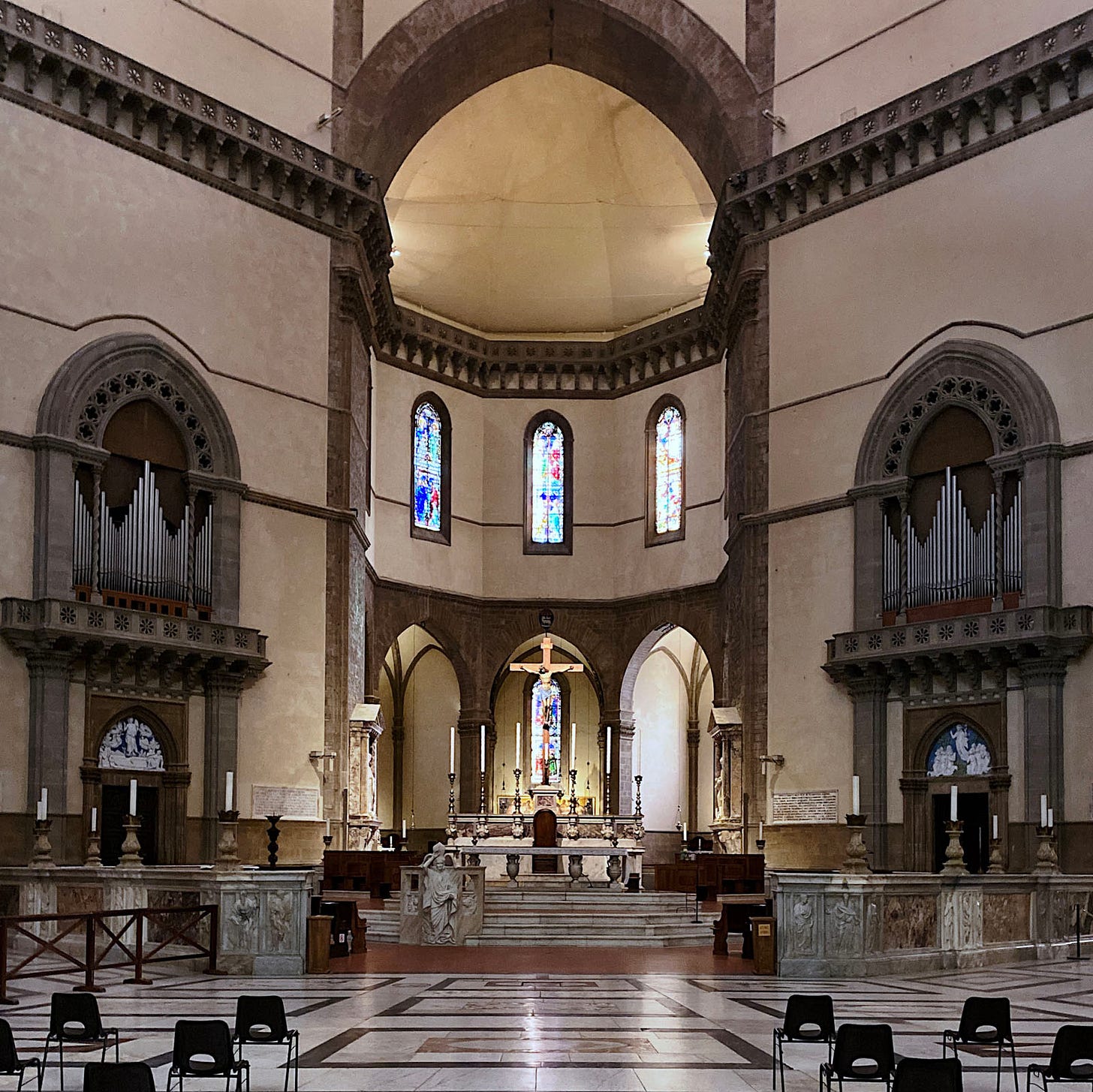
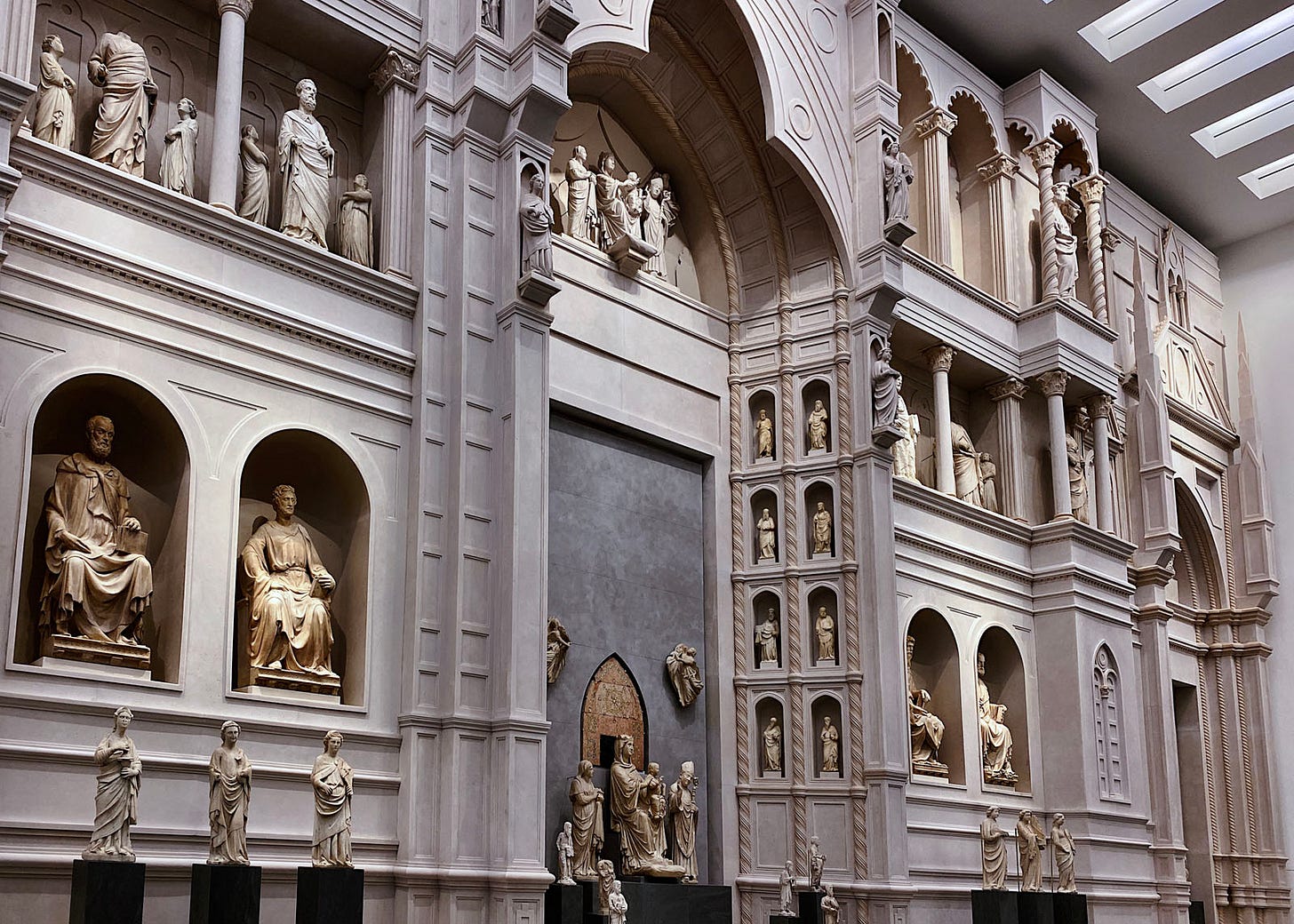
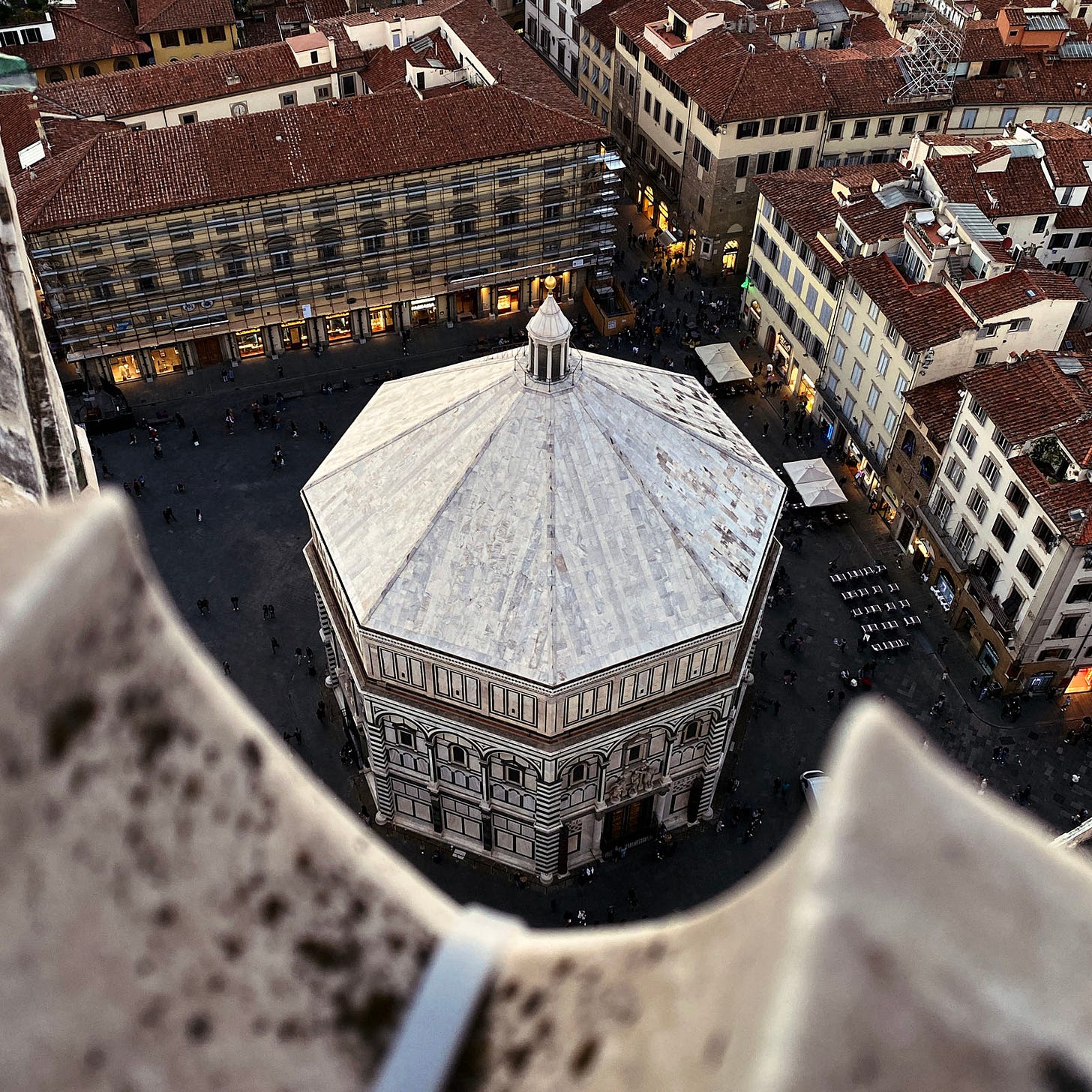
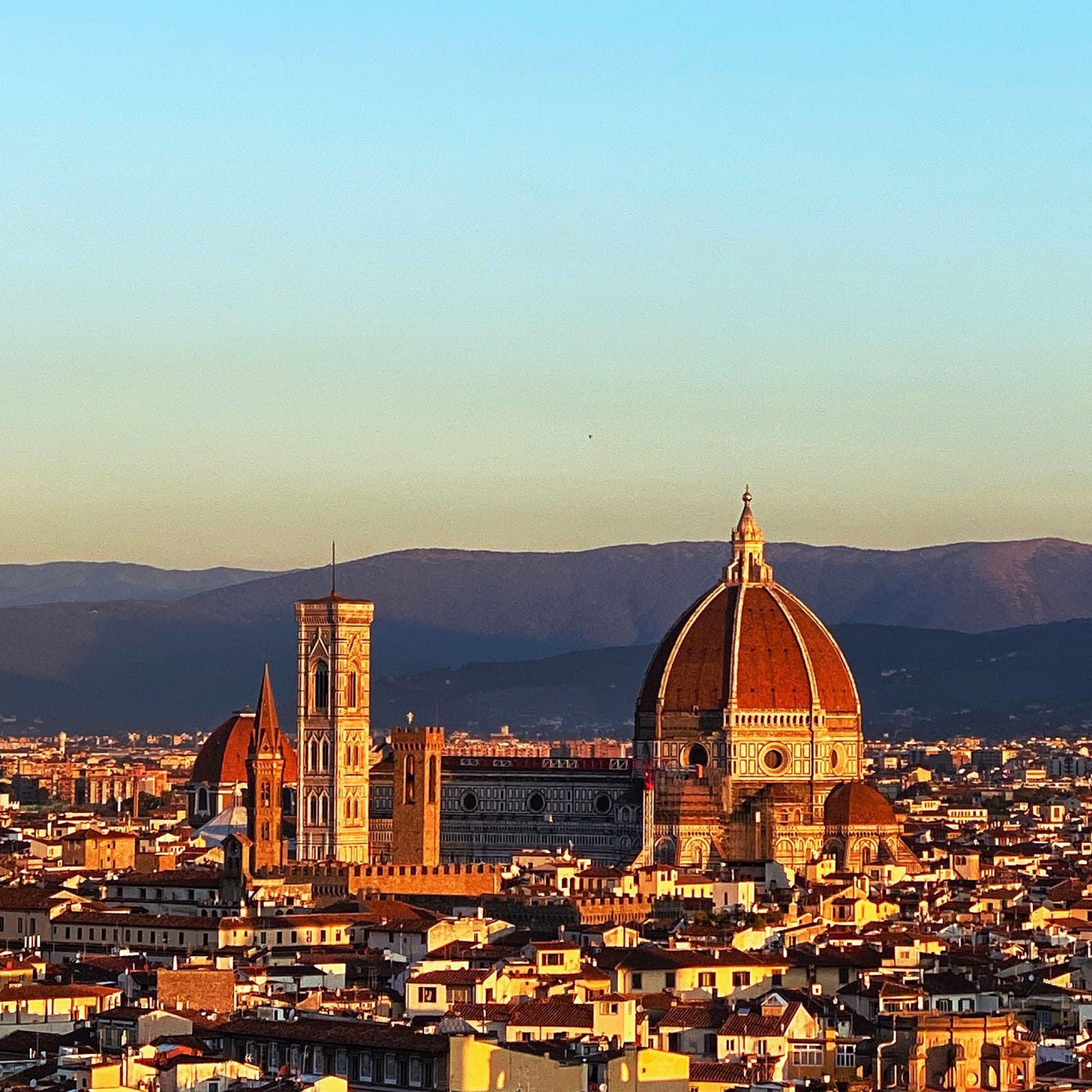

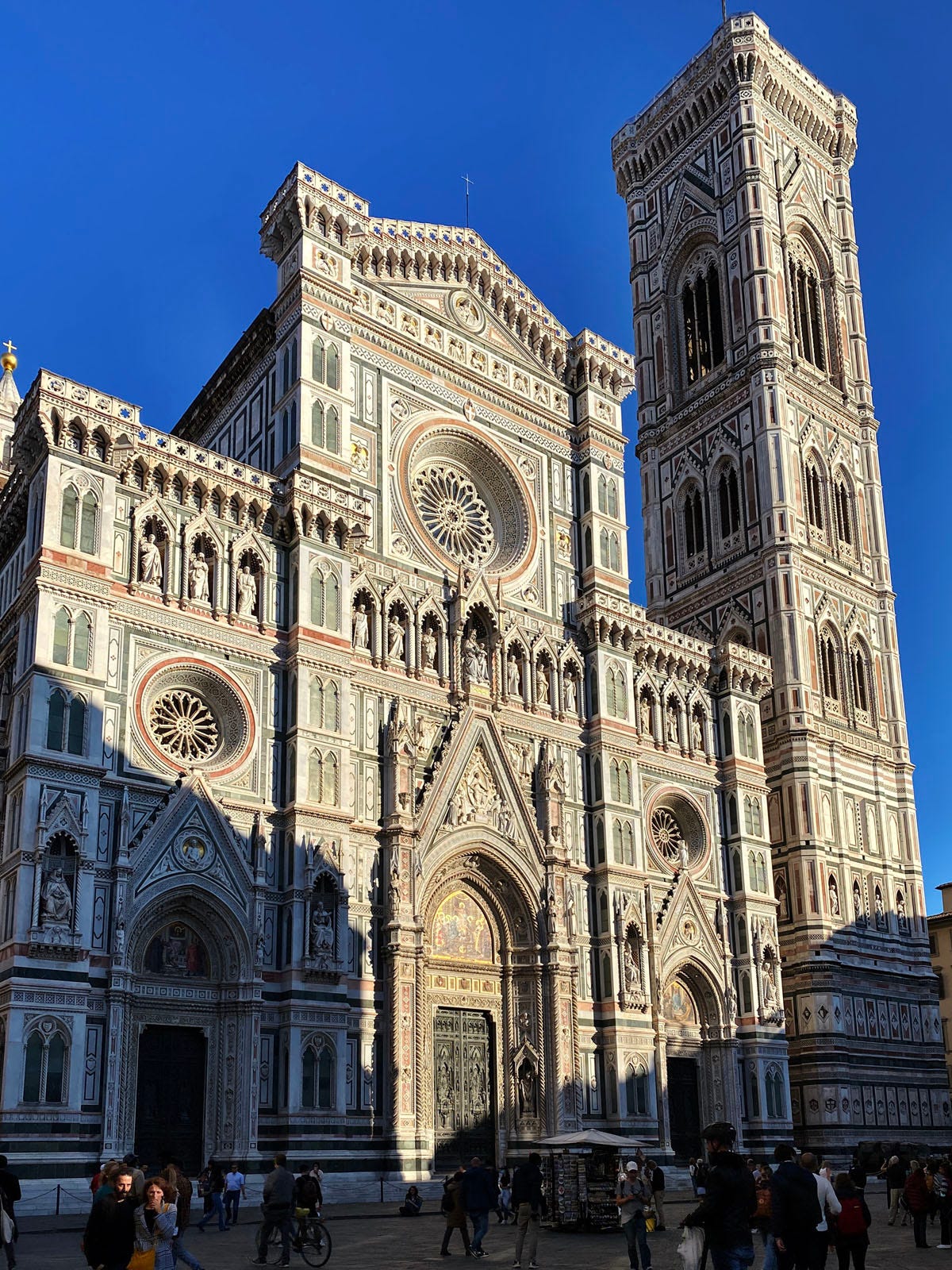
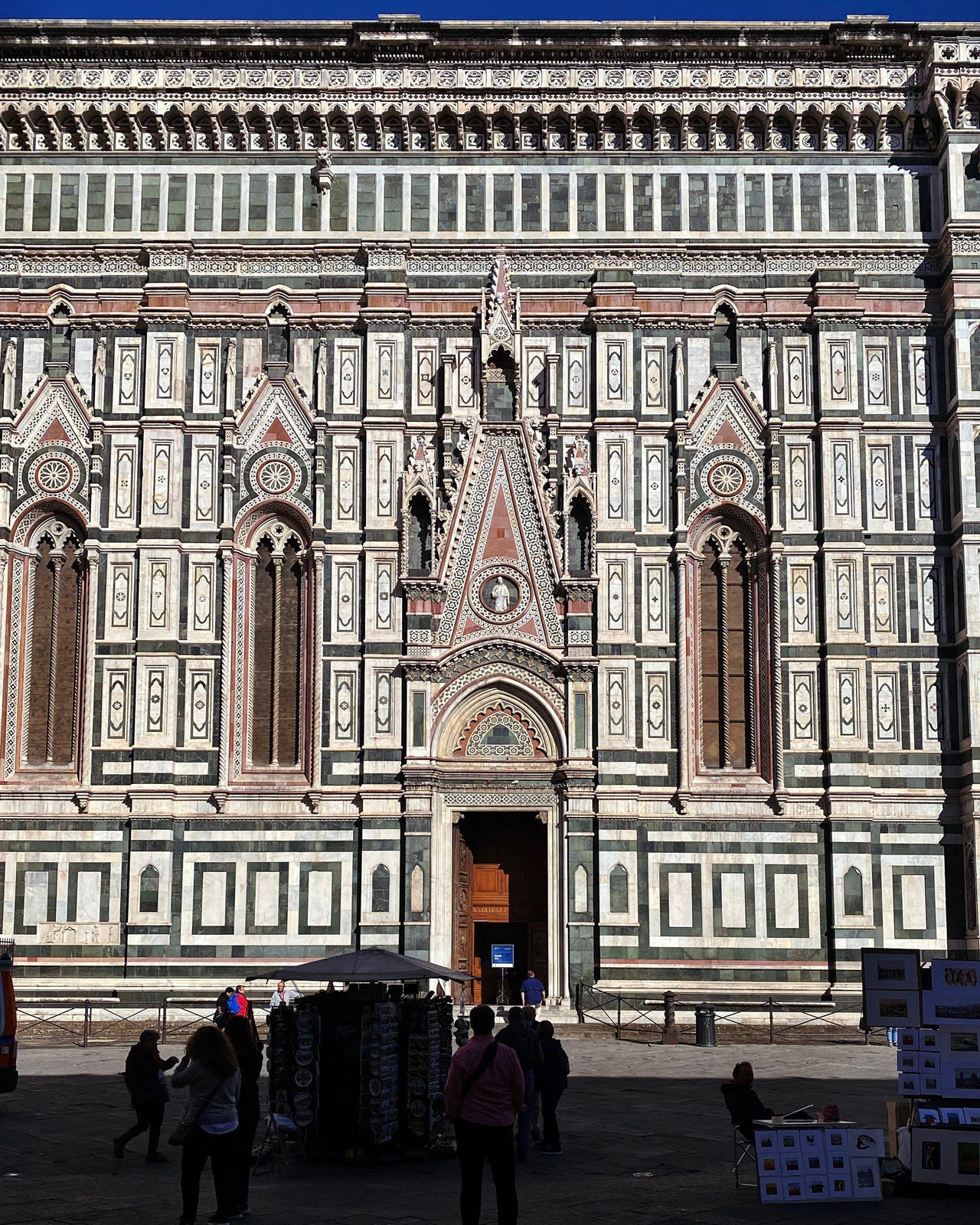
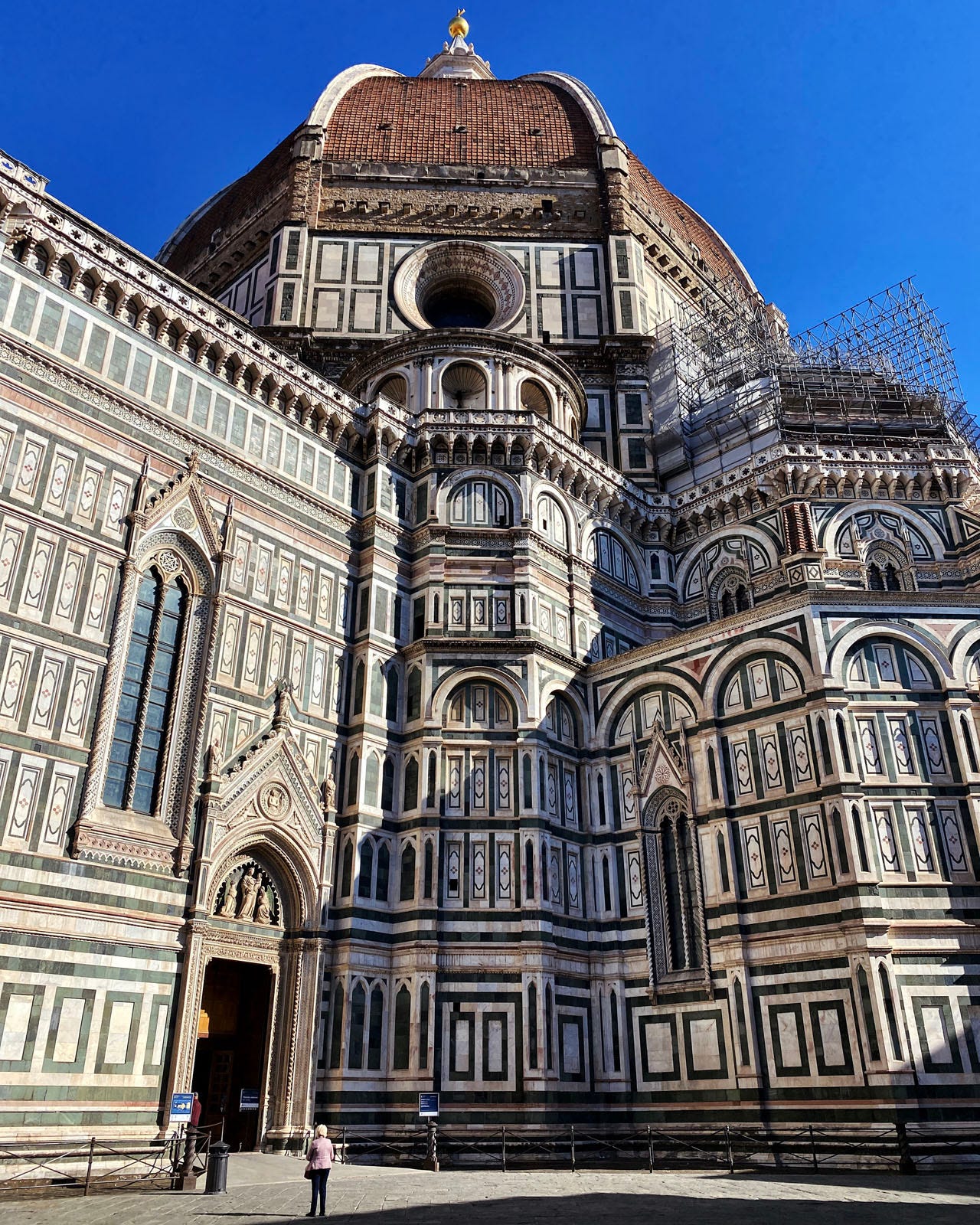
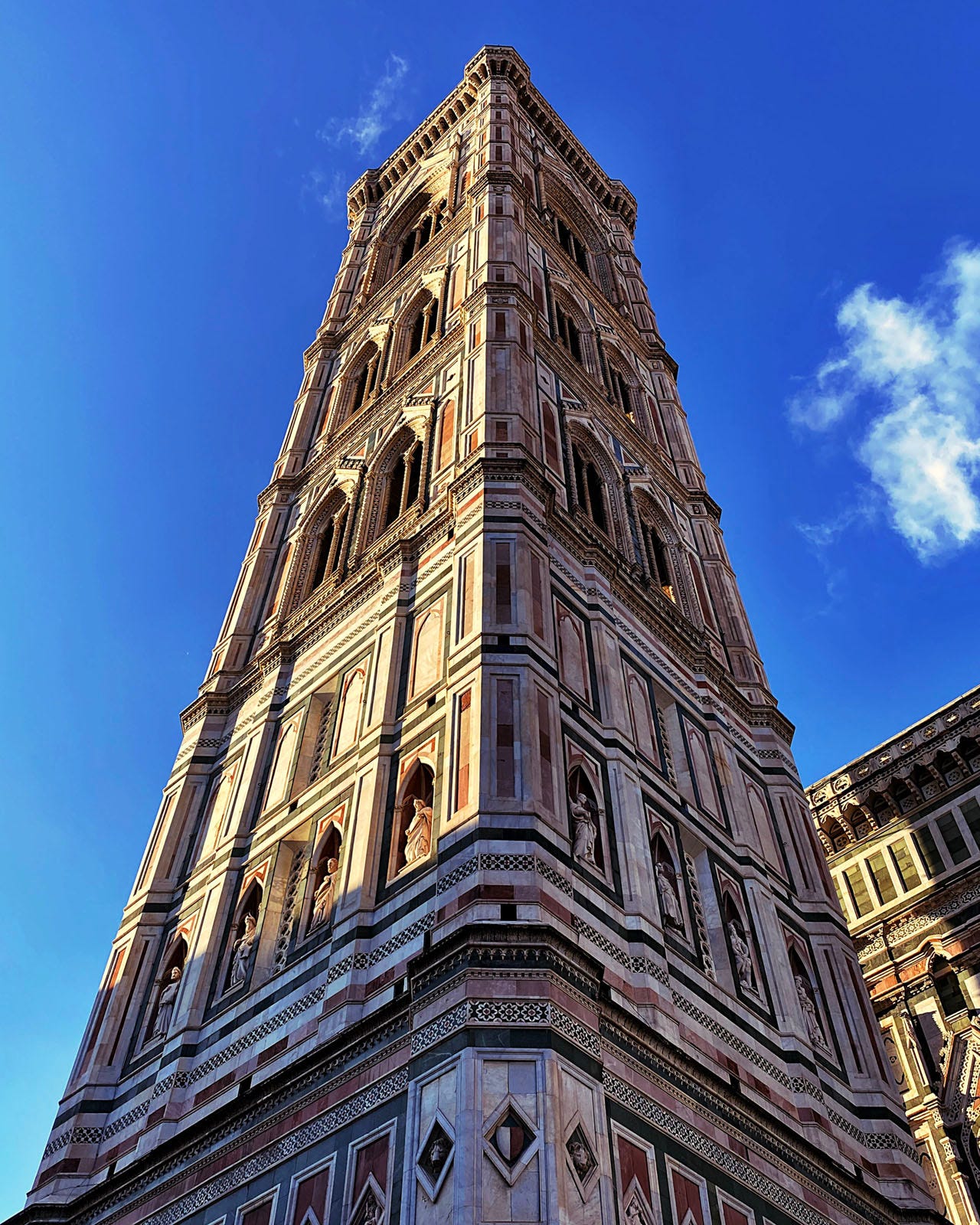
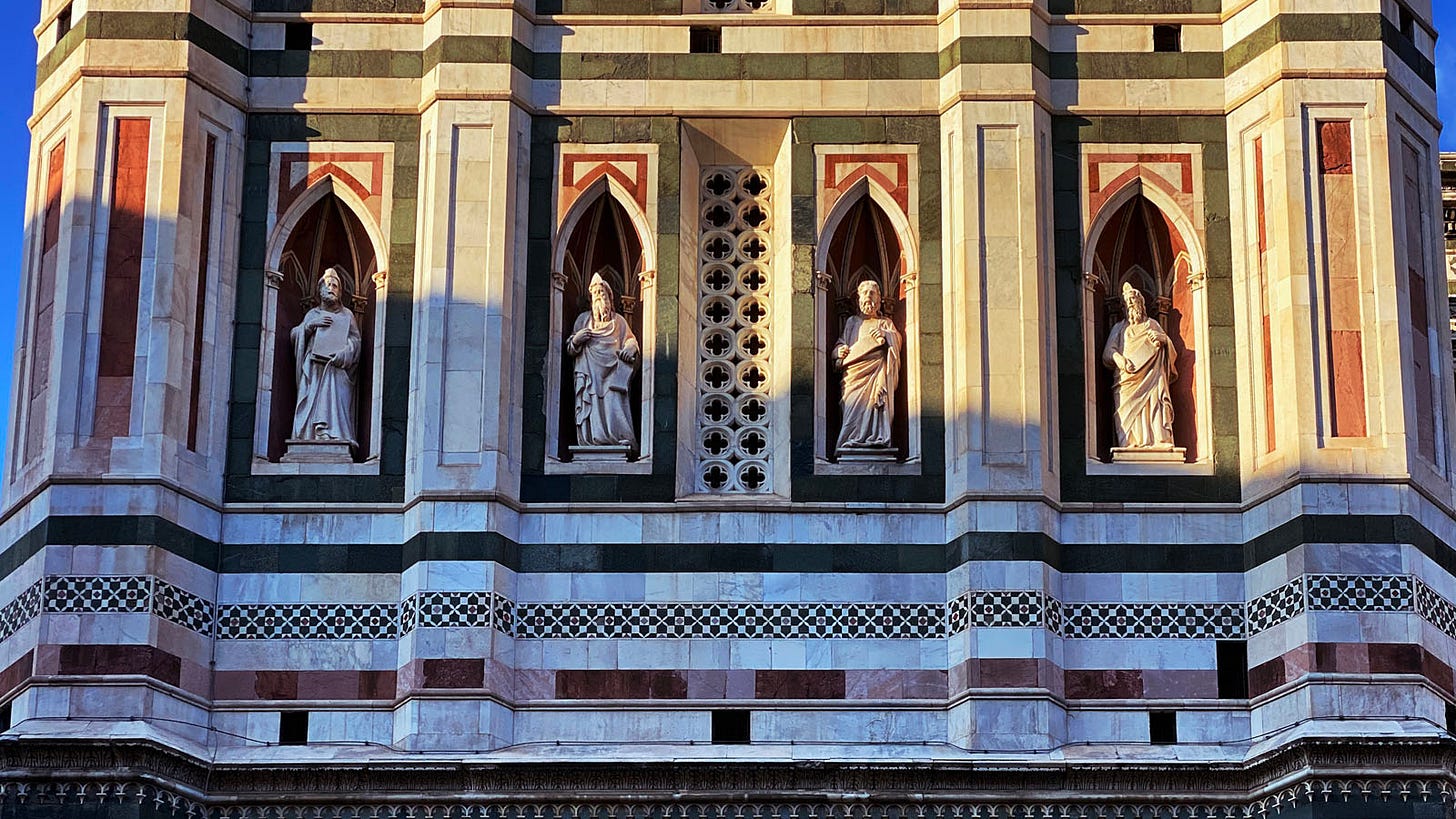
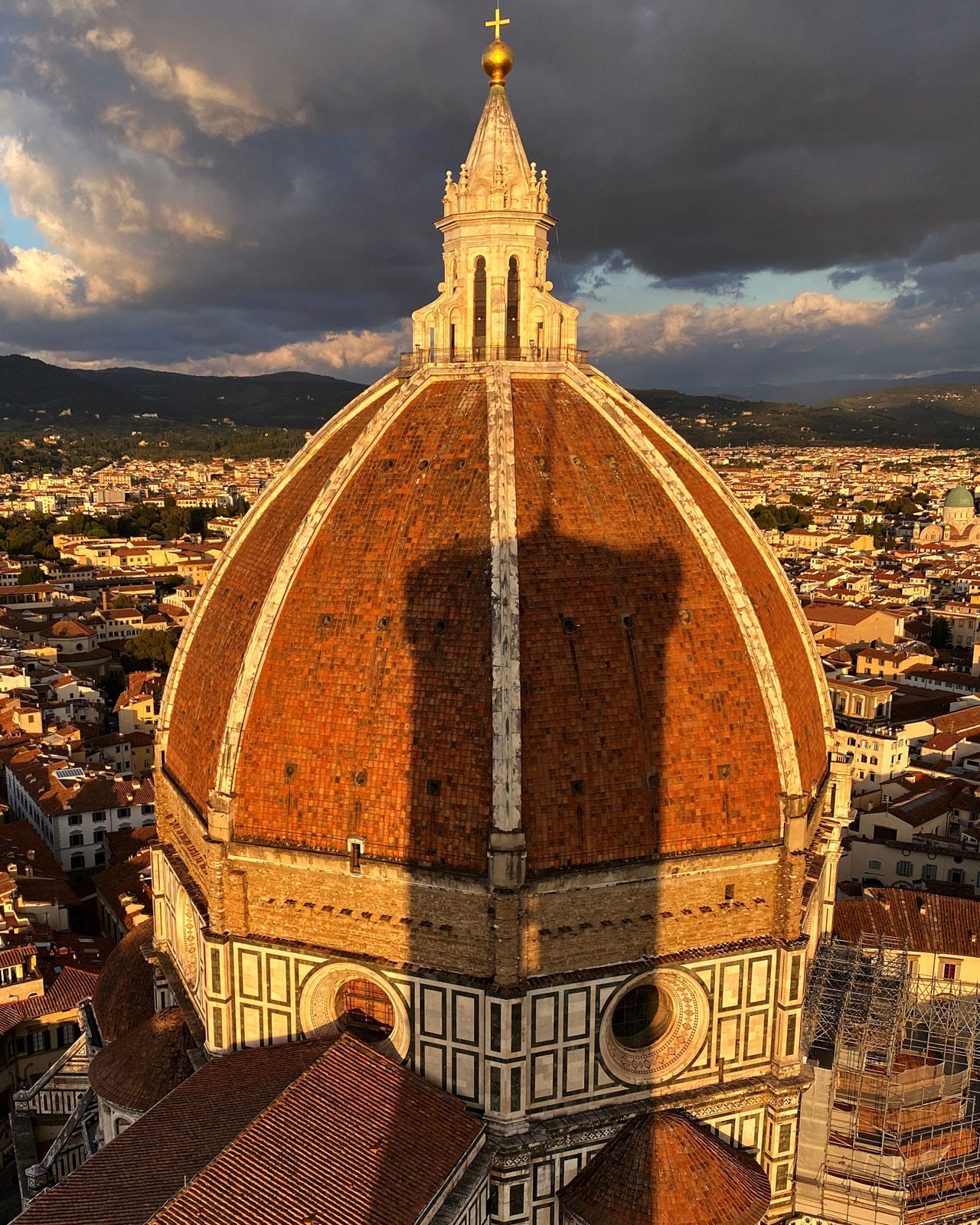
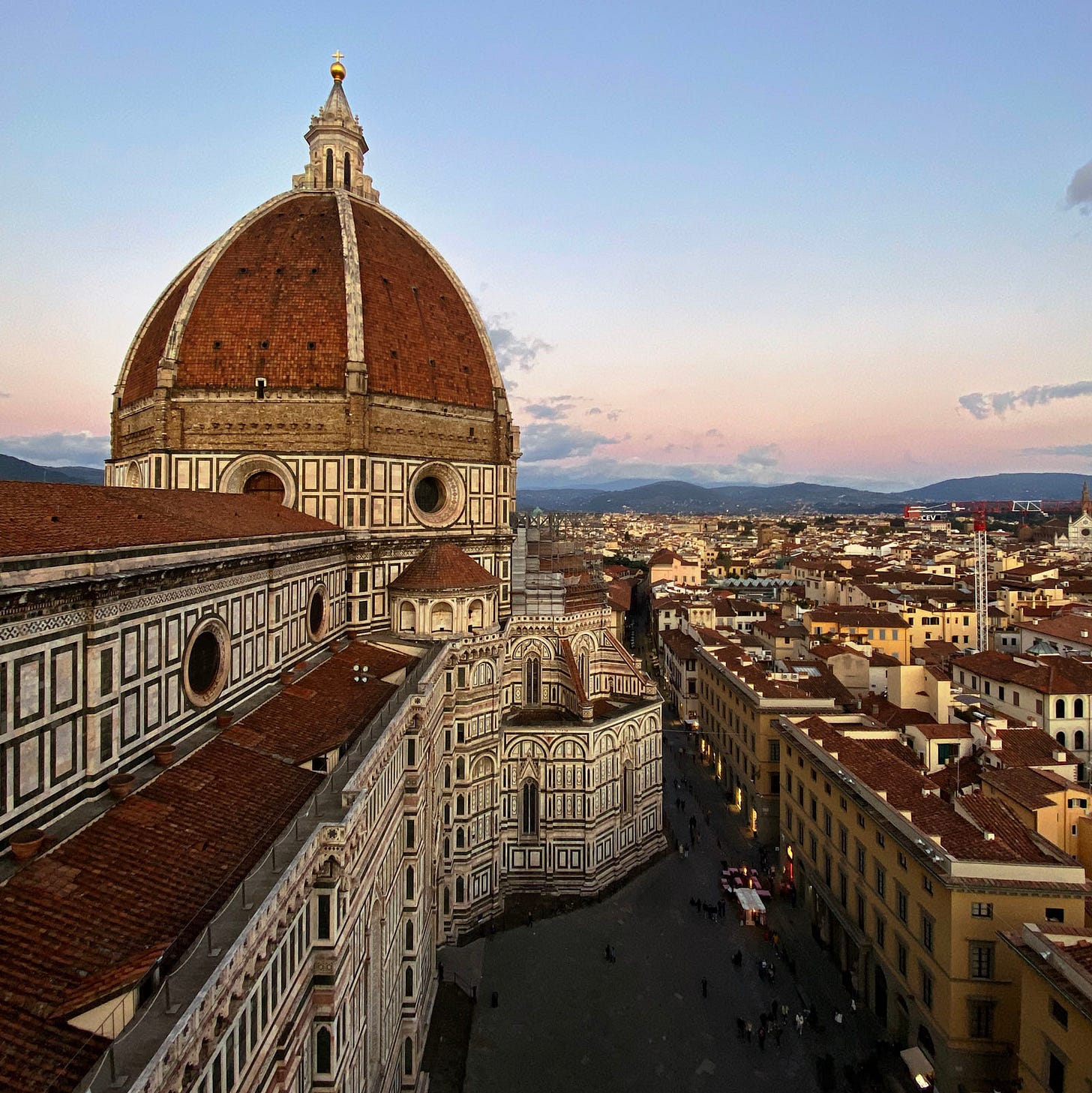
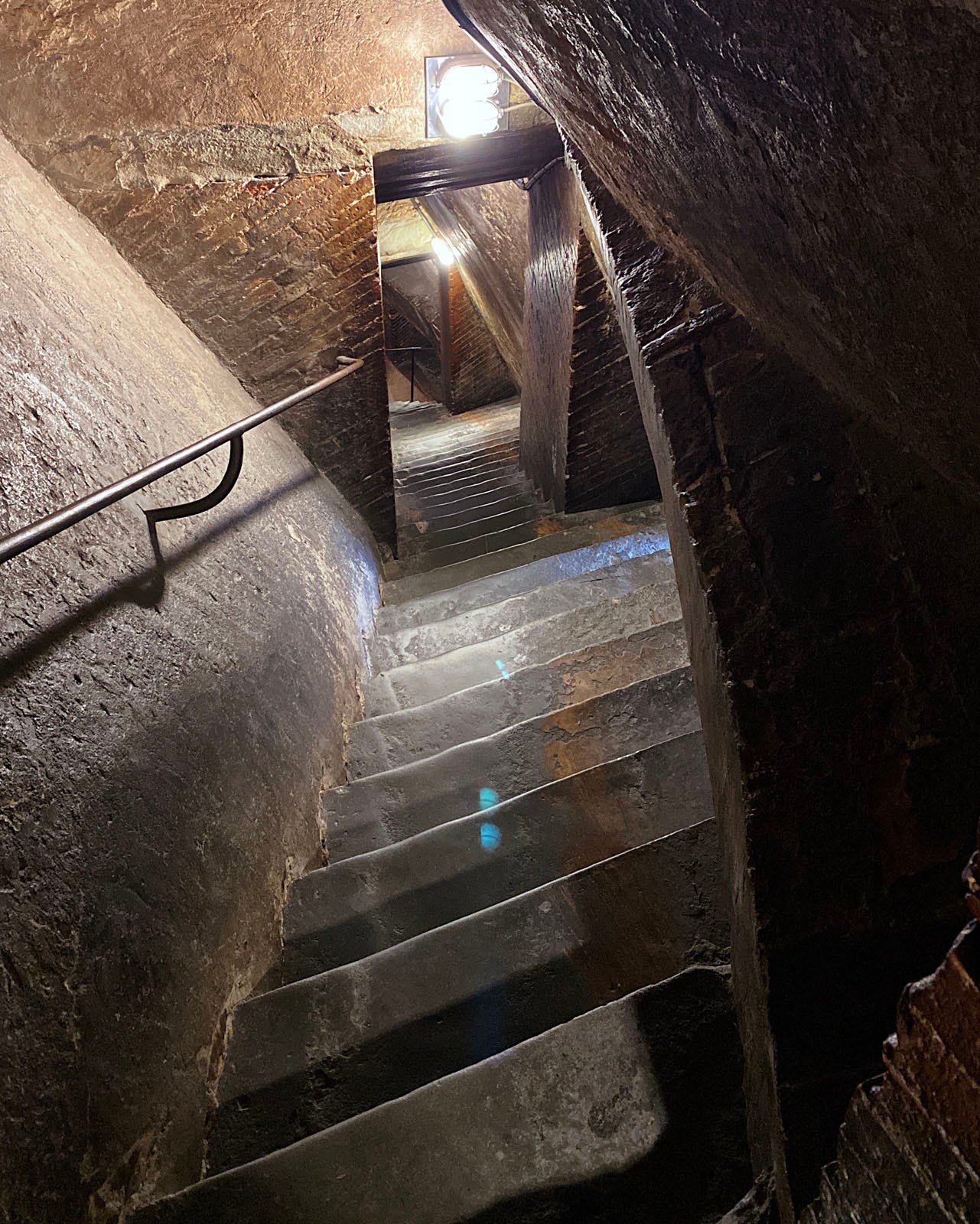
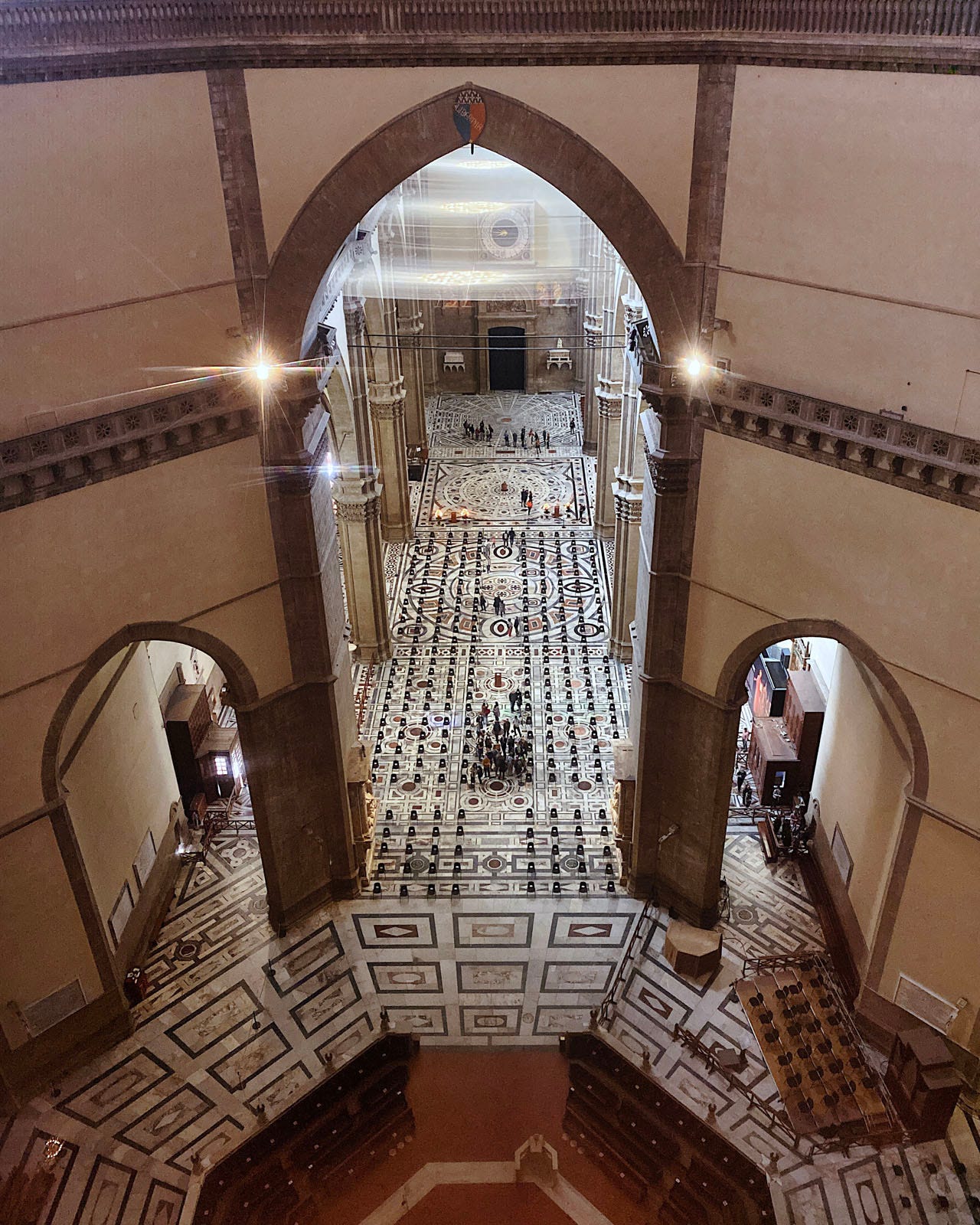
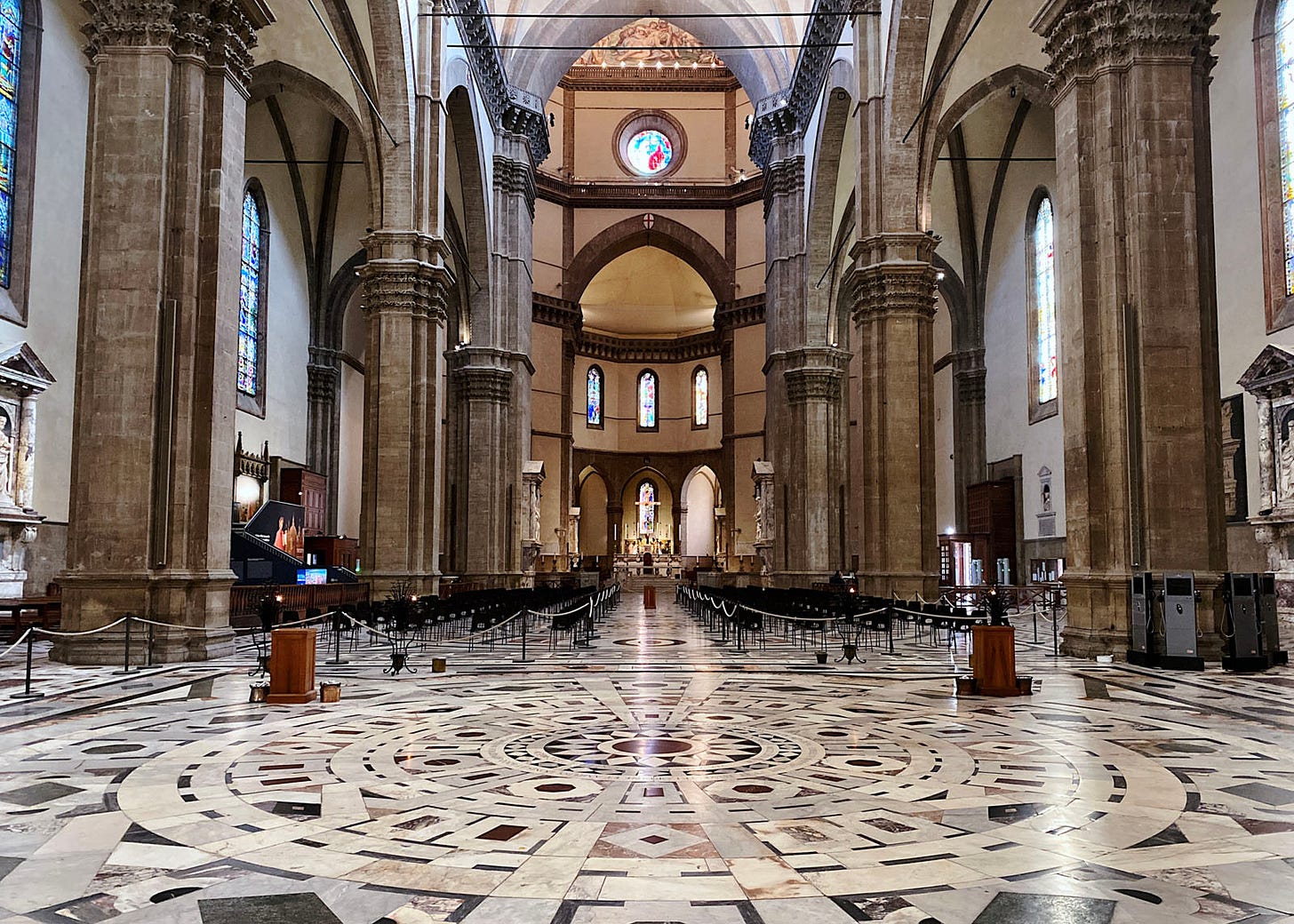

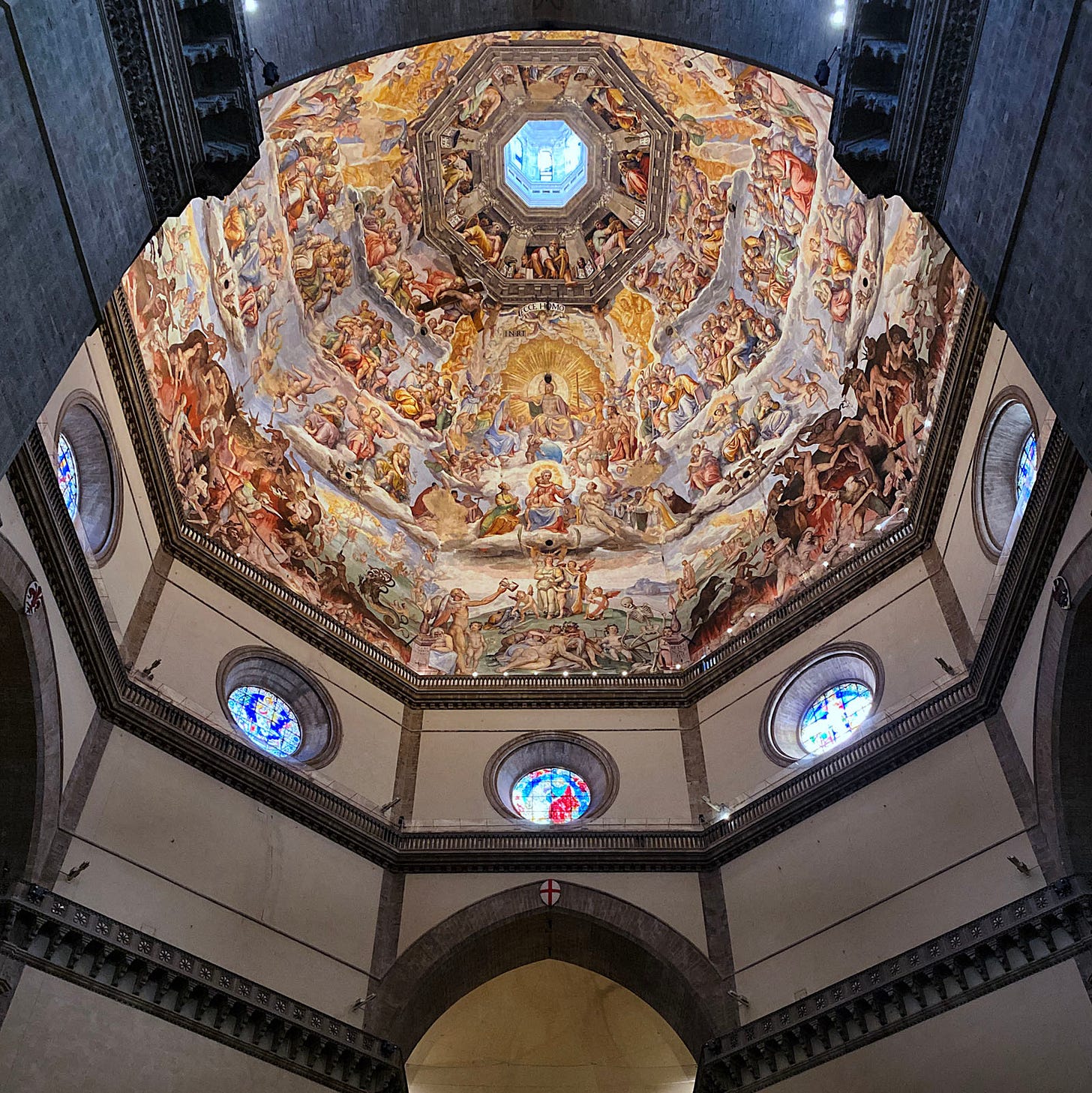
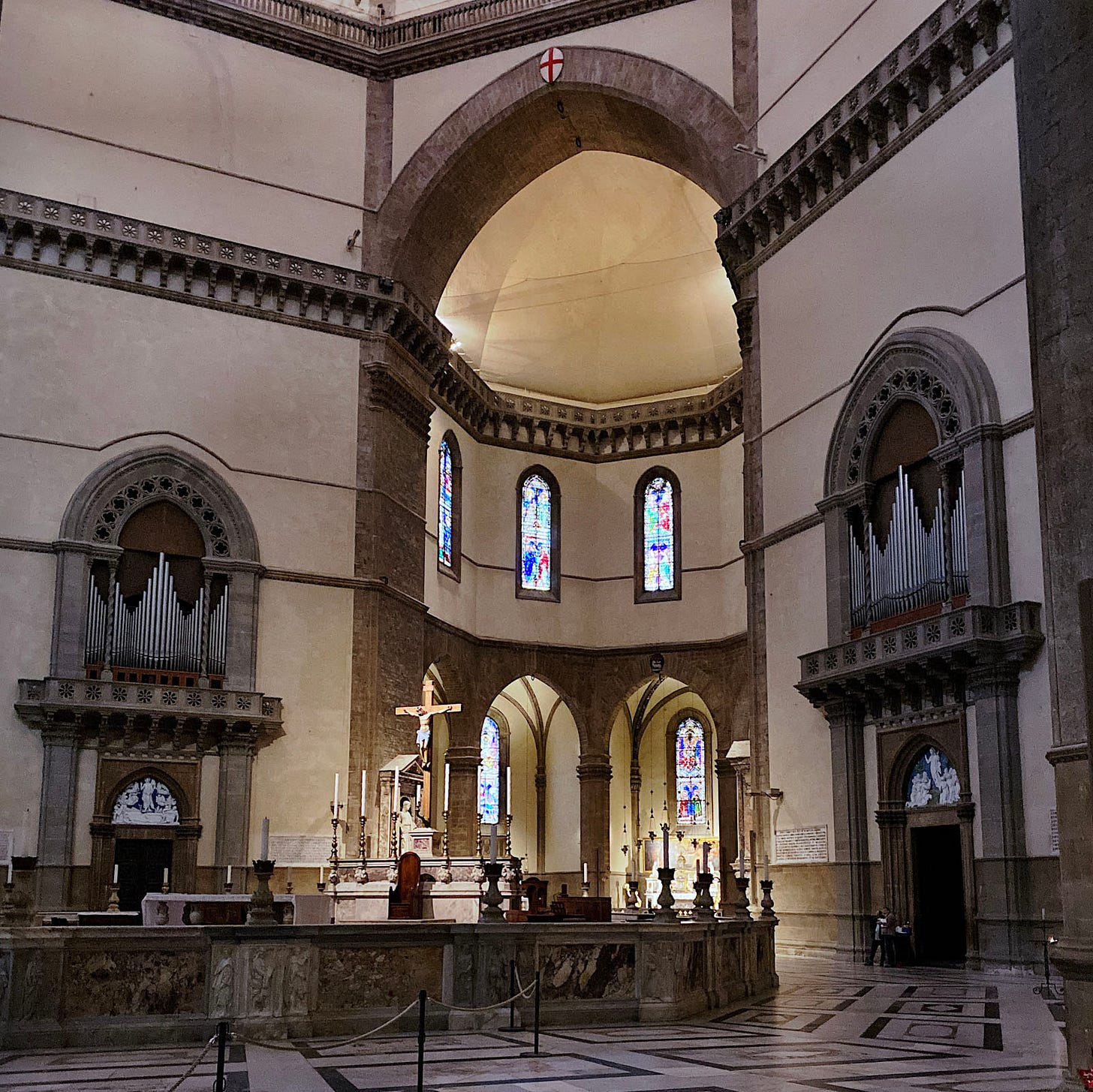
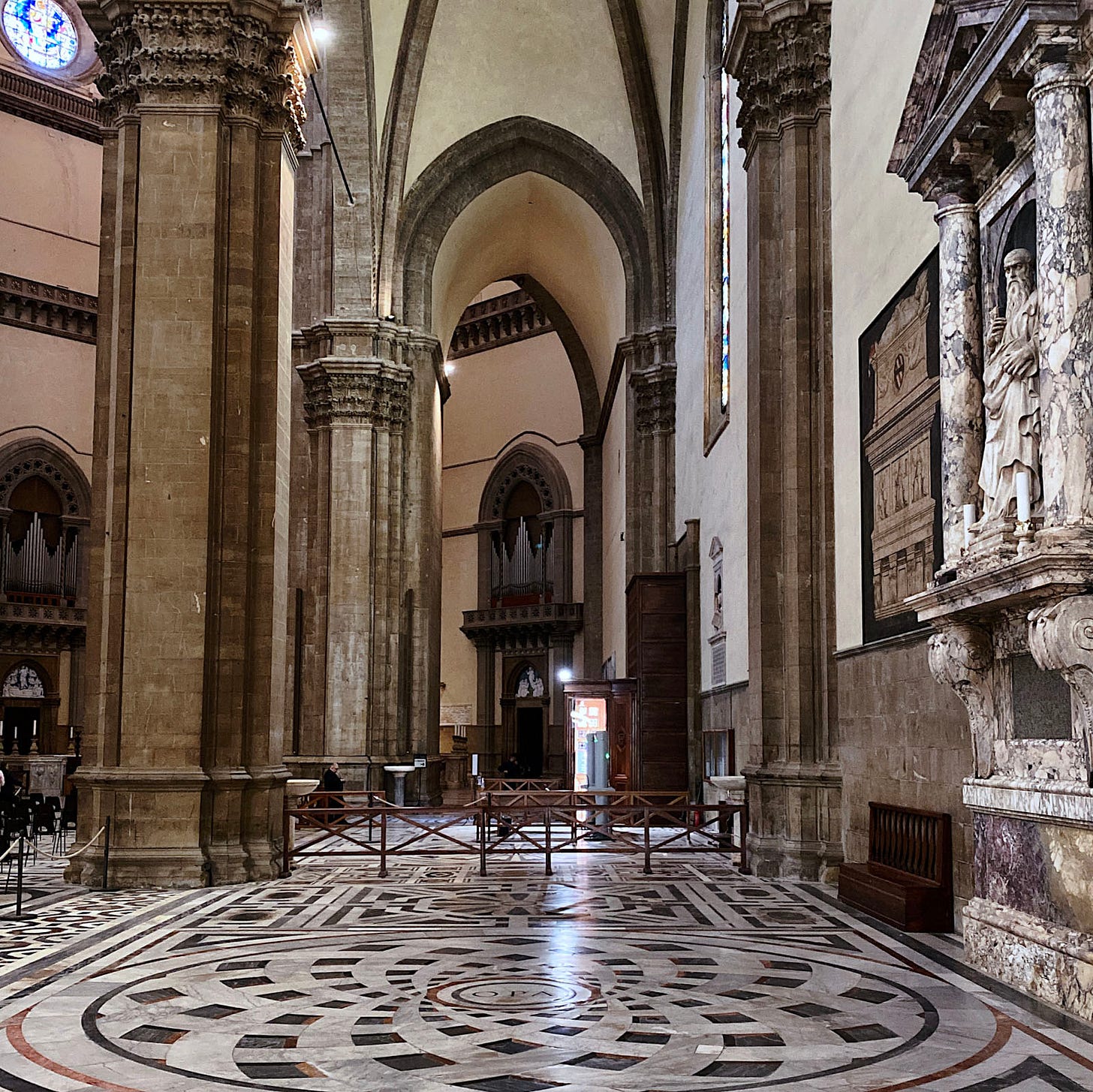
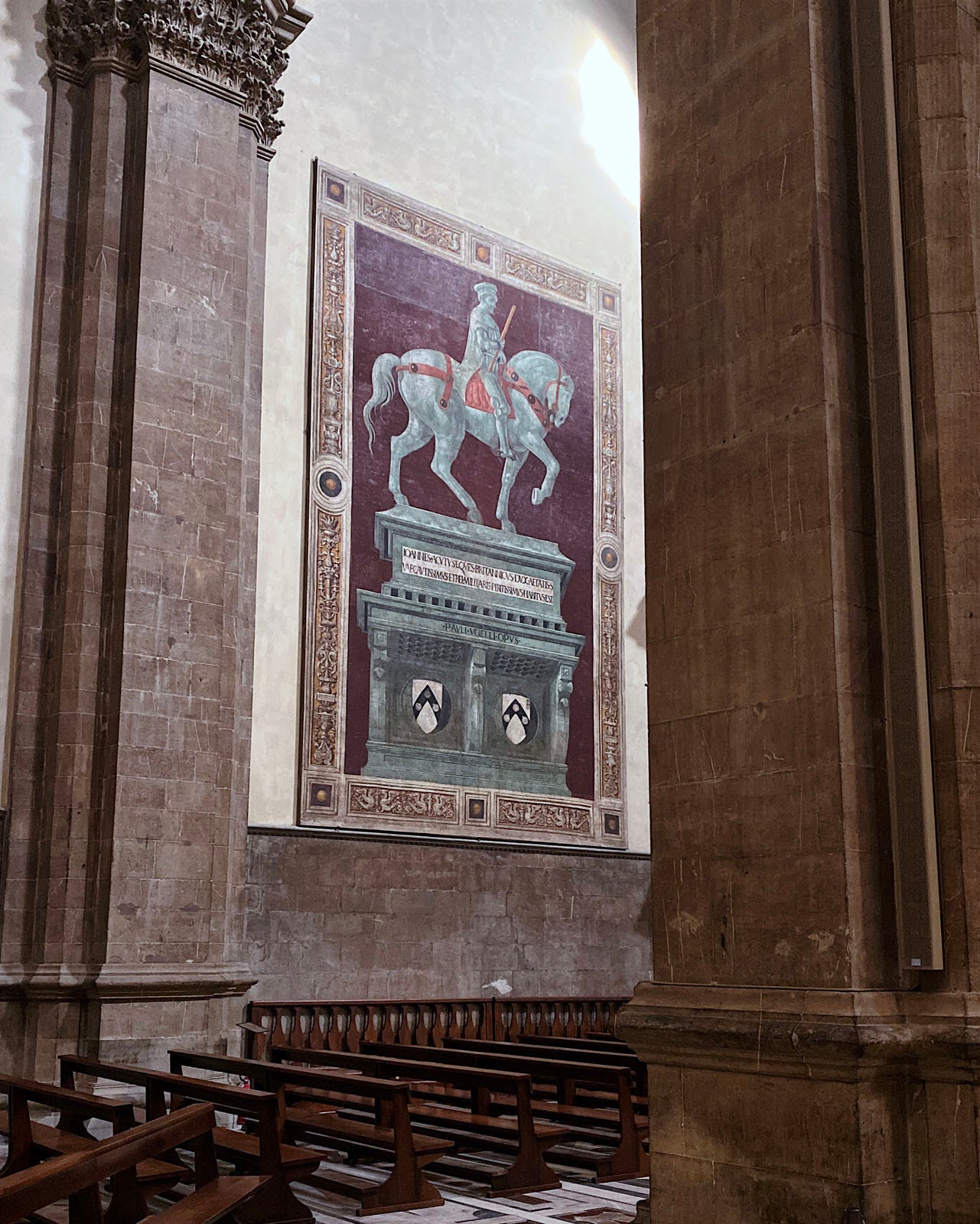
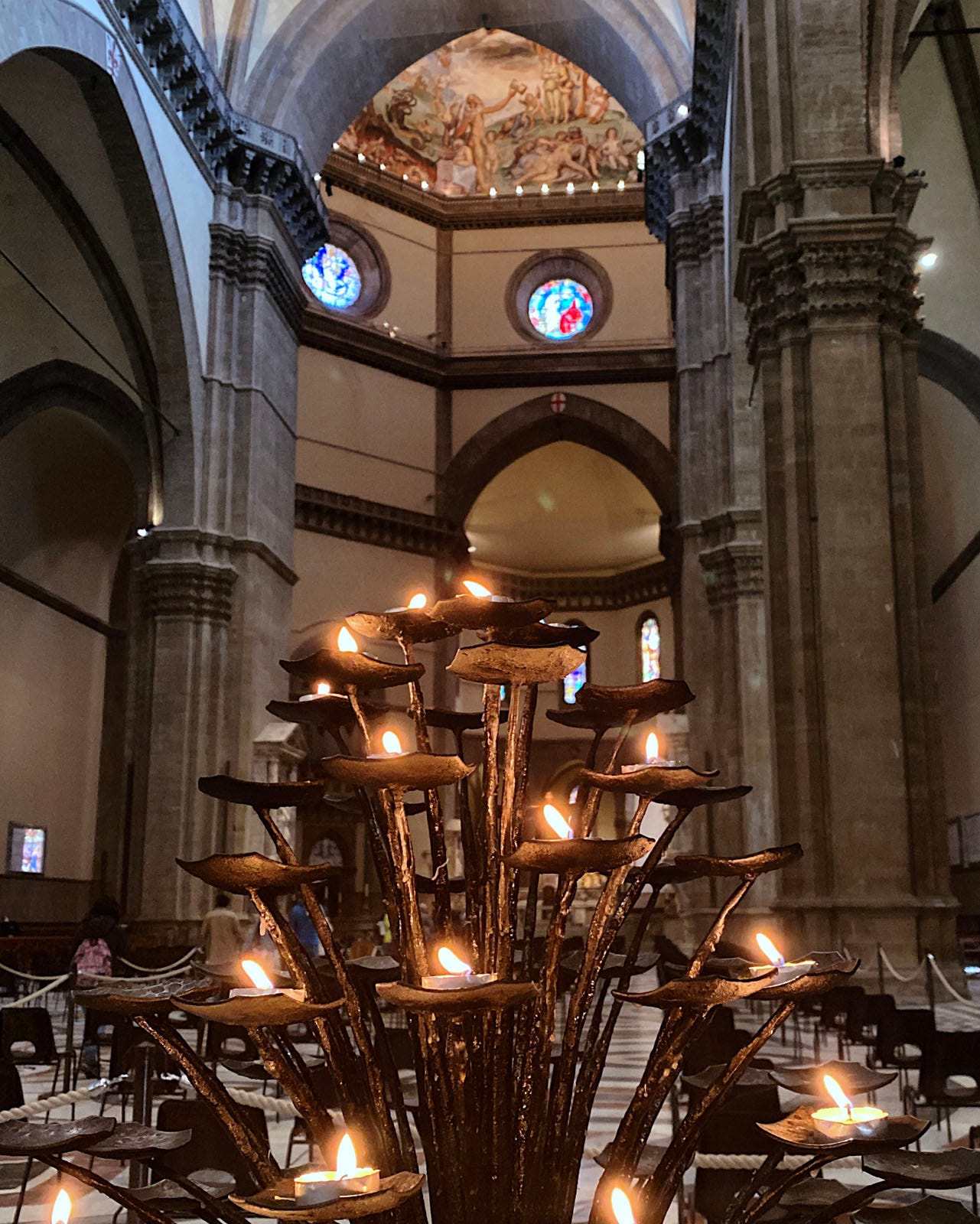
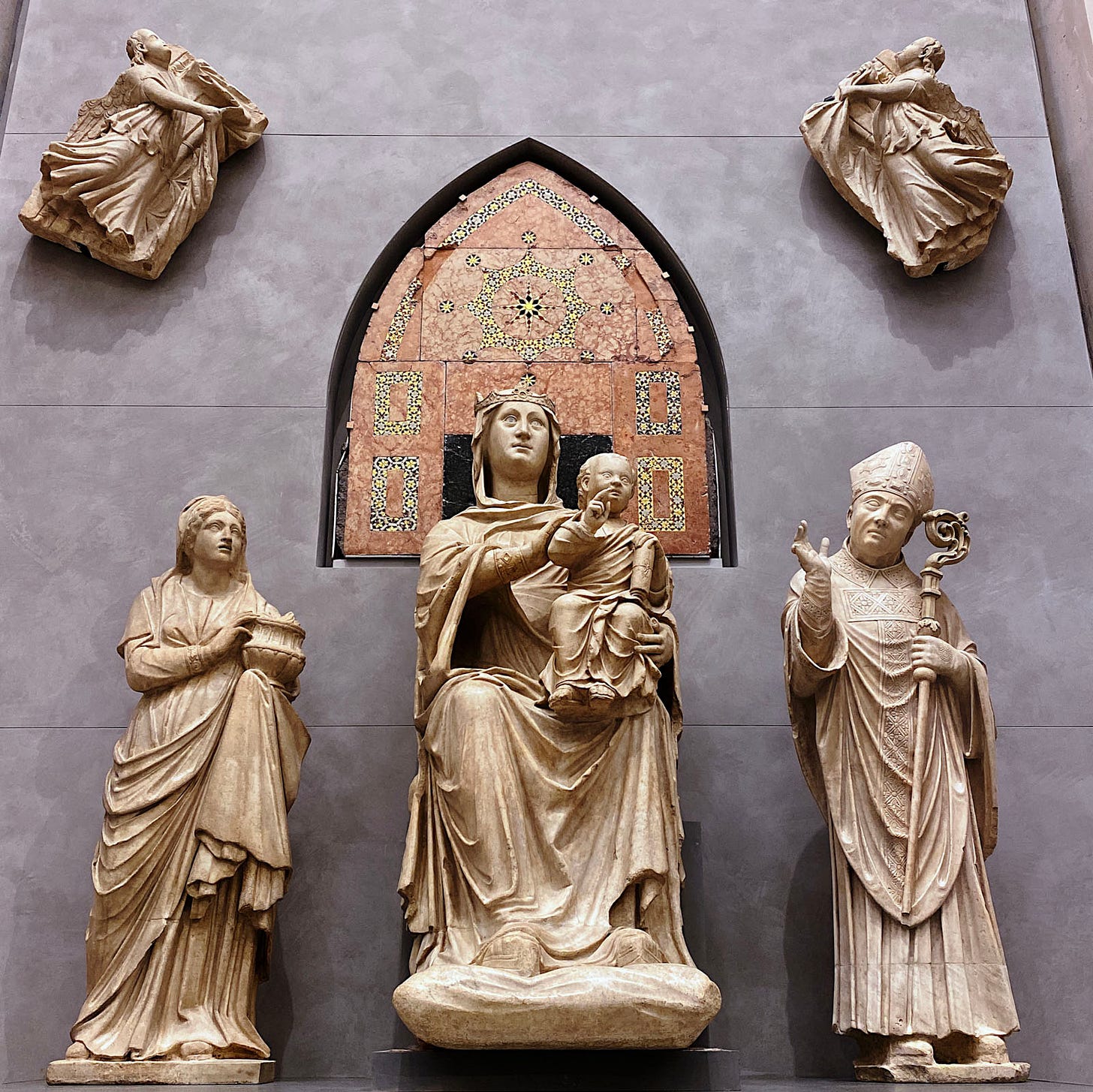

I really enjoyed King’s book on the dome years ago. Now it feels time for a re-reading.
A great introductory article to this magnificent cathedral!